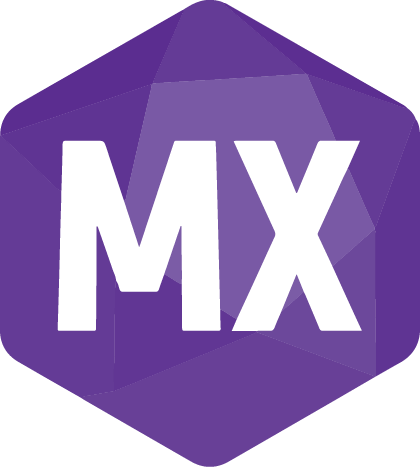- Home
- Release Notes
- DRYiCE MyXalytics 6.3
DRYiCE MyXalytics 6.3

RELEASE DETAILS
| Product Name | DRYiCE MyXalytics |
| Version Number | 6.3 |
| Release Month | April , 2024 |
HCL DRYICE MyXalytics provides visual insights into IT operations, including SLA violations, RBAC, trends, outage predictions, and more. It facilitates data-driven decision-making through unified visibility and governance, an automation-first approach, predictive analytics, and self- service.
With MyXalytics, businesses can navigate the complexities of the modern business landscape with confidence and precision, ultimately achieving their goals. Meanwhile, MyXalytics FinOps optimizes the cloud economy, connecting technology, business, and finance. It provides real-time financial insights, advanced cost optimization, resource allocation, and technology integration.
Key features include granular cloud visibility, chargeback monitoring, optimization recommendations, tag management, and reporting governance, allowing businesses to effectively navigate the current landscape grand. Version 6.3 focuses on various new features (such as AKS, EKS, GKE, and DEX Console), integration adapters, and runbook repository enhancements.
New Features
Budget Forecasting and Alerts
To allow users a flexible and efficient method to manage report distribution, ensuring that emails are sent only when required, v6.3 introduces the selection and scheduling of multiple reports, defining of conditions for email dispatch, and the automation of email sending based on these conditions.
Enabled AWS Volume Right Sizing Recommendation to reduce IOPS
Users can enable AWS volume right sizing recommendations to receive tailored suggestions for reducing IOPS, based on a defined threshold, ensuring optimal resource utilization and cost efficiency.
Azure AKS Kubernetes Services Integration & Recommendations
By implementing the recommendations- Azure Kubernetes Cluster IDLE, Node IDLE, Node Right-Sizing, Node Scheduling, and PODS IDLE, collectively offer customers a holistic view of their AKS environment, and provide actionable insights to optimize resource allocation, improve performance, and reduce costs, ultimately enhancing the efficiency and effectiveness of their Kubernetes deployments on Azure.
AWS EKS Kubernetes Services Integration & Recommendations
To provide customers with a comprehensive understanding of their EKS environment and actionable insights to optimize resource allocation, improve performance, and reduce costs, the below listed AWS EKS Kubernetes services integrations and recommendations are added. This leads to increased efficiency and effectiveness of Kubernetes deployments on AWS, ultimately improving the overall operational efficiency of the customer's infrastructure.
- The EKS Kubernetes Cluster Inventory
- EKS Kubernetes Node Inventory
- EKS Kubernetes Pods Inventory
- AWS Kubernetes Cluster IDLE and Node IDLE recommendation
- Node Right Sizing Recommendation
- Node Scheduling Recommendation
- PODS IDLE Recommendation
GCP GKE Kubernetes Services Integration & Recommendations
The customers can now get a comprehensive view of their GKE environment and provide actionable insights to optimize resource allocation, improve performance, and reduce costs, leading to increased efficiency and effectiveness of Kubernetes deployments on GKE, ultimately improving the overall operational efficiency of the customer's infrastructure.
Azure AKS Kubernetes Services Integration System Performance (Inventory and Metrics)
This feature offers users valuable insight into their AKS environment allowing them resource optimization, identifying performance bottlenecks, and increasing overall efficiency. By leveraging the performance metrics, customers can make informed decisions to enhance the performance and stability of their Kubernetes deployments on Azure.
AWS EKS Kubernetes Services Integration System Performance (Inventory and Metrics)
Customers are now empowered to make informed decisions about their EKS environment by providing detailed visibility into resource utilization and performance metrics. Customers can use this information to optimize resource allocation, improve application performance, and reduce costs, ultimately enhancing the overall efficiency and effectiveness of their Kubernetes deployments on AWS.
GCP GKE Kubernetes Services Integration System Performance (Inventory and Metrics)
Customers will be able to make informed decisions to enhance the performance and stability of their Kubernetes deployments on the Google Cloud Platform by the addition of the feature that provides customers with valuable insights into their GKE environment, allowing them to optimize resource allocation, identify performance bottlenecks, and improve overall efficiency.
AZURE SQL instance right-sizing recommendation
By utilizing the recommendation, we can suggest Azure SQL instances that fall within specific CPU/memory usage thresholds for rightsizing. This allows us to optimize resource allocation and potentially reduce costs by eliminating unnecessary resources.
This approach helps customers optimize their Azure SQL resources by ensuring that they are using the right number of resources for their workload. By rightsizing their Azure SQL instances, customers can reduce costs and improve efficiency, leading to a more cost-effective and streamlined operation.
AWS config changes history integrations
We successfully implemented the EC2 and EBS resource type configuration change history integrations, maintaining their data in separate destination tables and updating them on a time series basis. These tables contain historical data for all configuration changes made to the respective resources.
This approach provides customers with a comprehensive record of configuration changes to their EC2 and EBS resources, enabling them to track and analyze historical data for better resource management and optimization. By maintaining this detailed history, customers can troubleshoot issues more effectively, improve resource allocation, and enhance overall system performance.
New Template in Report Builder (New Reporting Template in a Form of Topology View)
The Topology Chart Visualization provides a relational view of network types, illustrating the latency passing from one device to another. With drill-through functionality, users can explore hierarchical views in detail.
This visualization offers customers a clear and comprehensive understanding of their network topology, helping them identify latency issues and optimize network performance. The drill-through functionality enhances user experience by allowing for detailed exploration and analysis of network relationships, enabling more informed decision-making and troubleshooting.
New Template in Report Builder (Activity Feed)
This feature offers customers a clear and chronological overview of all changes made to their CIs, enabling them to track and understand the evolution of their resources. It helps in identifying patterns, troubleshooting issues, and ensuring compliance with change management processes. Additionally, it provides a valuable audit trail for accountability and documentation purposes.
Dashboard Linkage (Quick Navigator)
Instead of loading the dashboard upon login, users will see a Report Linkage option, which, when clicked, will load the reports. Users can configure their profile settings to determine whether the Dashboard Linkage or a Native landing page will be used.
This approach allows users to customize their experience based on their preferences, providing them with a more personalized and efficient workflow. By choosing the landing page, users can quickly access the information that is most relevant to them, improving overall usability and productivity.
Report Cascading (Cascading the Report from parent to child)
When a report is created and subsequently cloned, any modifications made to the parent report will cascade to the child report. This functionality extends to different user profiles as well.
This feature ensures consistency and efficiency in report management by allowing users to easily propagate changes from the parent report to its clones. It saves time and effort by eliminating the need to manually update each report, leading to improved accuracy, and streamlined report maintenance.
Tiled Group by Comparison Score:
This likely pertains to a data organization and display method where individual records are grouped according to their comparison scores. These groups are then presented in a tiled format, where each group is typically represented as a separate tile or card in the user interface.
Template Based on Previous Year/Period:
This indicates that the format or structure of the data display is derived from data from a prior year or period. This may imply that the same groupings or categories utilized in the previous year or period are being employed again. Alternatively, it could signify that the actual data from the prior year or period serves as a baseline or reference point for the current data.
Specify Date Range to Get Data:
This suggests that users can define a specific date range, and the system will retrieve data that falls within that range. This feature enables flexible data retrieval based on time parameters specified by the user.
Showing to Cards Level:
This likely indicates that the data is presented at a "cards" level, where each record or group of records is displayed as a distinct card in the user interface. This method is commonly used for displaying grouped or categorized data, providing a clear and concise visual representation.
The tiled format enhances data visualization, offering a visually pleasing and structured display that aids users in recognizing patterns and trends. Users benefit from efficient data retrieval by specifying date ranges and enabling flexible and targeted data access tailored to their requirements. Consistency in data presentation is ensured by basing the format on data from previous periods, allowing for easy comparison with historical data. Overall, presenting data at a "cards" level improves the user experience by providing a clear, concise representation of grouped or categorized data, enhancing usability and comprehension.
Performance Enhancements
Modified the stored procedure for the scorecard tree view (SP Names: GetMetricDataByMetricID_TreeView_VR01 and GetMetricViewHierarchicalData)
Metric Collection Service Enhancement: Enhanced the Metric Service to process the data through SP rather than In-memory. Also enhanced the High Memory utilization by service.
Security Enhancement
Implemented RBAC (Role-Based Access Control) functionality in the Universe object master.
Implemented RBAC functionality while fetching data from the metric tables in the Universe configuration.
Added a “permissionId” filter to the stored procedure to support the RBAC (Role-Based Access Control) functionality.
Implementation of New Encryption Algorithm to support AES GCM as well as other security fixes (KB0109608)
| S.NO | Description | Version |
| 1. | Remove "No data" value from LM jobs API Response. | 6.3.0.0 |
| 2. | Unable to onboard BLOB customer 6.2. | 6.3.0.0 |
| 3. | Dex Application mapping console | 6.3.0.0 |
| 4. | AWS S3 Duplicate Tag Data Parsing | 6.0.5,6.3.0 |
| 5. | Azure - Last Update Date Time Update to January month | 6.0.7,6.3.0 |
| 6. | AWS - Performance jobs deadlock issue | 6.1.3,6.3.0 |
| 7. | Report Cascading | 6.3.0.0 |
